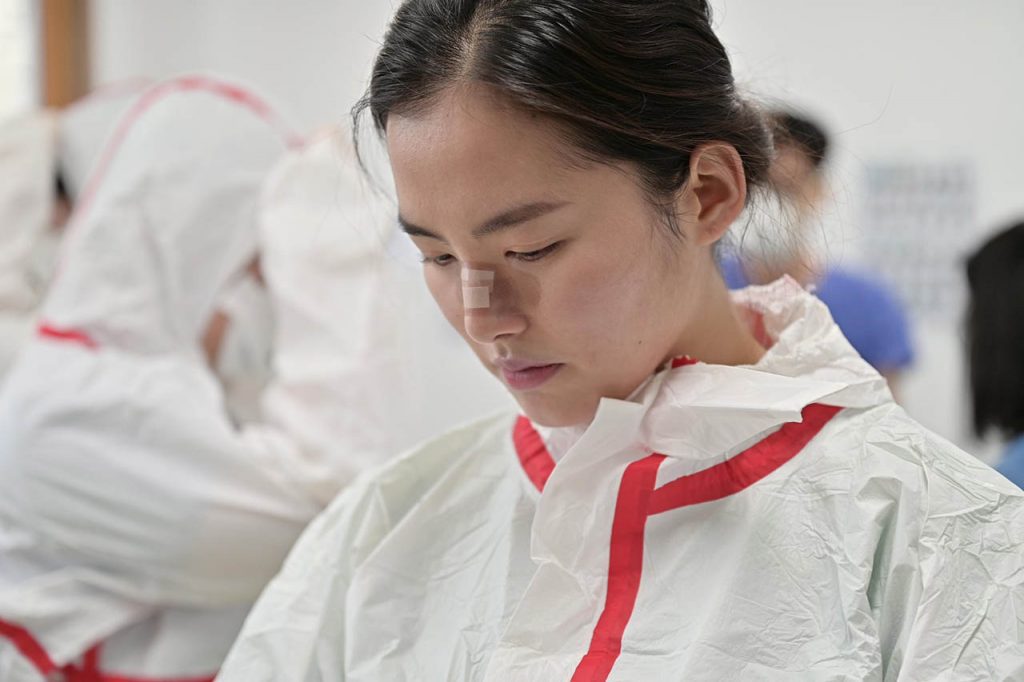South Korea’s new virus cases fell back to below 50 on Monday, but a continued rise in cluster infections, mostly tied to churches, put to the test the country’s capability to fight the virus. The country added 42 cases, including 30 local infections, raising the total caseload to 12,757, according to the Korea Centers for Disease Control and Prevention (KCDC).
The tally marked a sharp fall from 62 new cases of COVID-19 reported Sunday and 51 additional cases identified Saturday, which might be due to less testing over the weekend. The country’s health authorities remain concerned about sustained rises in local infections and imported cases, which may trigger another wave of a virus outbreak in the summer.
The total global virus caseload topped 10 million Sunday, less than seven months since the first reported outbreak in China late last year, as the virus is spreading at an alarming pace.
Of the locally transmitted cases, 21 cases were reported in densely populated Seoul and the surrounding area. Two cases were newly reported in the central city of Daejeon and three in Gwangju, 329 kilometers south of Seoul, the KCDC said. Cluster infections tied to churches in the greater Seoul area have emerged as the bane of the country’s efforts to contain further virus spread. Cases traced to a major church in Seoul’s southwestern ward of Gwanak reached 27 as of noon Sunday. The infections were connected to close contacts via choir activities and a two-day workshop program, the KCDC said.
More small-scale mass infections were also reported in the capital and adjacent areas. South Korea has been dogged by rises in sporadic cluster infections since it relaxed strict social distancing on May 6 on the back of the flattened virus curve. The greater Seoul area accounted for most of the newly added cases this month. Health officials warned that they may consider expanding tougher infection preventive measures — currently in place only in the Seoul metropolitan area — across the country if virus situations get worse.
Health authorities unveiled a three-level social distancing scheme on Sunday, saying that it could strengthen the degree of social distancing depending on the severity of the virus outbreak. The country is currently in the Level 1 social distancing scheme, under which the number of daily virus infections, mostly below 50, is manageable under the current medical system.
Level 2 will be applied when daily infections exceed 50 for the 14th straight day, but remain below 100. Level 3 means there is an outbreak of mass infections, under which daily virus cases exceed 100, according to the KCDC. The country also decided Sunday to allow spectators to start attending sports events, albeit in a limited number, as early as this week under the condition that strict infection prevention measures are taken. The country is also struggling to stem cases coming in from overseas. It reported 12 additional imported cases.
Recently, cases coming from Asia have spiked mainly because the number of foreign migrant workers has risen. Of 22 new imported cases reported Sunday, 18 cases came from Asian countries, including four from Saudi Arabia and two from Pakistan. At least 19 cases were connected to cluster infections on Russia-flagged cargo ships docked at a port in the southeastern city of Busan. Imported cases, once the main source of virus cases here, fell to a single-digit figure early this month after the country strengthened quarantine measures on all international arrivals in April. But such cases have bounced back to double-digit numbers since mid-June.
South Korea, meanwhile, reported no additional deaths, bringing the total death toll to 282. The fatality rate was 2.21 percent. The total number of people released from quarantine after full recoveries stood at 11,429, up 65 from the previous day. The country has carried out 1,259,954 tests since Jan. 3. (Yonhap)
